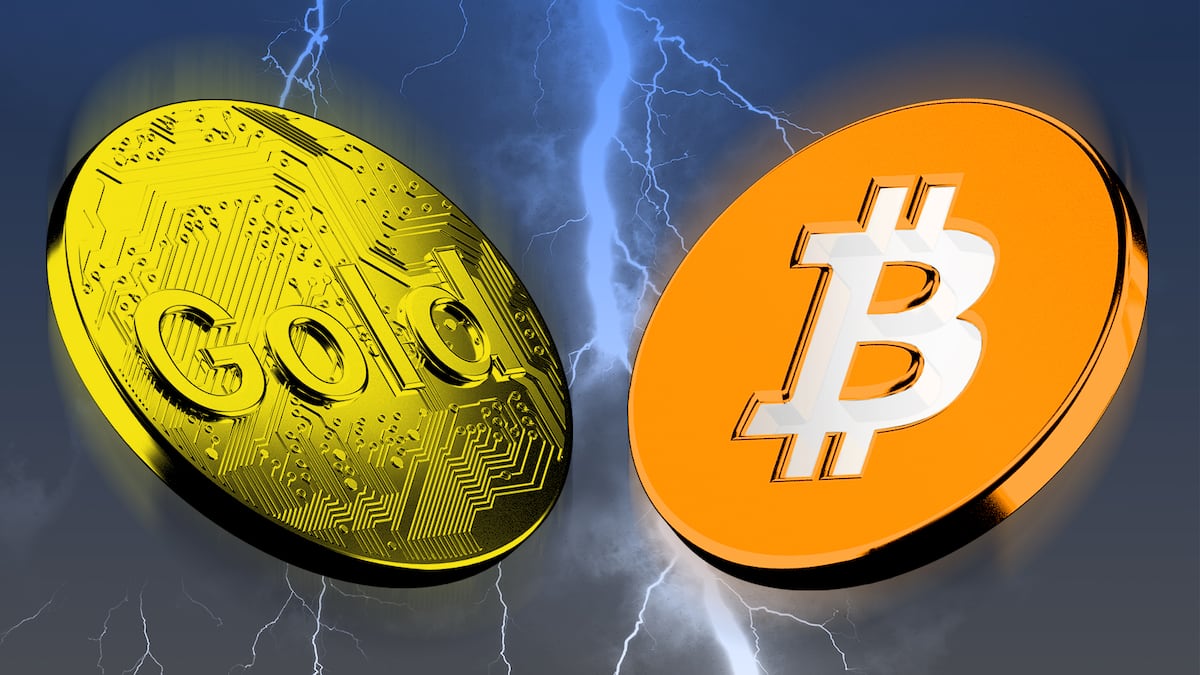- Gold has toppled a new price record of $4,370.
- The precious metal has outperformed Bitcoin this year.
- Analysts say gold’s price action “bodes well” for the top crypto.
Only time stands between Bitcoin and gold’s price rally.
While gold has surged 60% this year to over $4,350 per ounce, Bitcoin has been stuck in neutral. The top crypto is up just 15% in 2025, and has fallen 10% in recent weeks as trade tensions flared up between the US and China.
The divergence is brutal. Gold keeps hitting fresh all-time highs while Bitcoin seemingly can’t hold on to $110,000 — despite a recent record of $126,000.
For investors who bought into the “digital gold” narrative, watching the precious metal lap Bitcoin has been painful.
But there’s a twist, say market watchers.
“Don’t look at gold’s meteoric rise with envy. Look at it with anticipation,” Matt Hougan, chief investment officer at Bitwise, wrote in an October 21 note to investors. “It could end up showing us where Bitcoin is headed.”
The pattern matters because gold’s 2025 surge didn’t happen overnight.
Central banks started buying aggressively in 2022, but prices crept up slowly for three years before going parabolic. Bitcoin’s institutional buying spree, meanwhile, mostly kicked off in 2024.
If the same delayed explosion pattern holds, Bitcoin may not be lagging behind gold for much longer.
How high can Bitcoin go? Depends on who you ask. Arthur Hayes, Bernstein, and Standard Chartered have all called for a $200,000 Bitcoin price tag. Others, like 10xResearch, aren’t sold. They said it’s a coin toss that Bitcoin even tops $140,000 by the end of the year.
Central banks
The key to understanding both assets lies in who’s buying them — and when.
Central banks have been massive purchasers of gold since the US seized Russia’s holdings of US Treasuries following its invasion of Ukraine in 2022.
According to Metals Focus, central bank purchases have roughly doubled since the war began, from about 467 metric tons per year to roughly 1,000 metric tons today.
“That’s roughly twice the estimated buying by gold ETPs,” wrote Hougan.
What about Bitcoin? Well, it just doesn’t have that institutional buying power yet. Sure, Bitcoin ETFs have devoured more than 6% of total supply, and corporate treasuries now control more than 1 million Bitcoin, but central Banks aren’t buying — at least not yet.
Price sensitive investors
Although Central Banks have been on a multi-year shopping spree, gold’s price didn’t immediately rocket.
It went to $1,800 in 2023 from $1,800 in 2022 — an 8% gain — and $2,386 in 2024. Moreover, prices didn’t really explode until this year, when they flew about 60% to nearly $4,400.
Hougan’s theory is that price-sensitive investors sold into rising demand as central banks pushed prices up. Eventually that pool of sellers was exhausted, and prices took off.
The same pattern may be playing out in Bitcoin. Since Bitcoin ETFs launched in January 2024, ETFs and corporations have bought 1.39 million Bitcoin while the network produced less than a quarter of that.
Bitcoin prices have climbed 135% since then.
During that run, price-sensitive holders have taken gains. But as gold’s example suggests, those sellers will eventually be exhausted.
“As long as the combination of ETF and corporate purchases persists, Bitcoin will have its ‘Gold 2025’ moment,” Hougan wrote.
‘Just plain scary’
Not everyone is convinced.
Mike McGlone, senior commodity strategist at Bloomberg Intelligence, sees gold’s velocity as a warning sign.
“Gold is just plain scary,” he said on The Deep Dive podcast on October 21. “The velocity of this rally — up 60% in the year — last matched in 1979.”
That 1979 rally marked the end of massive inflation before Fed Chair Paul Volcker aggressively raised rates.
“When every major risk asset underperforms the rock, the ancient store of value, it’s not a good sign,” McGlone said.
Pedro Solimano is DL News’ Buenos Aires-based markets correspondent. Got a tip? Email him at psolimano@dlnews.com.


